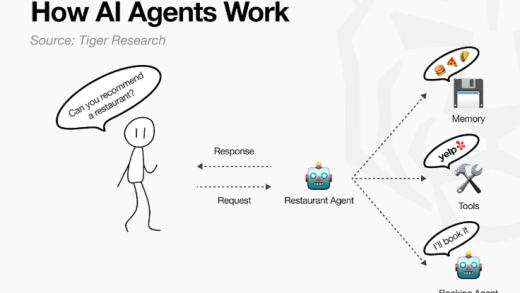Tether, the Stablecoin Giant, Accelerates Diversified Layout: Anxious to Break Through Under Regulatory Pressure?
As the absolute leader in the stablecoin sector, Tether has recently been making frequent moves: not only aggressively “shopping” in crypto verticals like mining, exchanges, and Layer1/Layer2, but also extending its reach into AI, brain-computer interfaces, agriculture, and even the sports industry. Behind this “all-round expansion” lies an underlying anxiety about the future – as the global stablecoin regulatory wave hits, Tether’s core product USDT is facing unprecedented challenges.
Regulatory Storm Approaching: USDT’s “Sweet Troubles”
In June this year, the U.S. “GENIUS Act” (Stablecoin Regulatory Bill) passed the Senate vote and is set to enter the House of Representatives for consideration. Proposed jointly by four senators, this bill serves as a “compliance manual” for stablecoins, with core provisions directly targeting the lifeline of issuers:
- Definition of Payment Stablecoins: Must be 1:1 pegged to fiat currency, used solely for payment settlement, and fully backed by highly liquid assets.
- Dual Licensing Regulation: Issuers with a market value exceeding $10 billion must be federally regulated; smaller issuers can register at the state level (meeting federal standards).
- 100% Reserve Requirement: Reserve assets are limited to cash, short-term U.S. Treasuries, or central bank deposits, and must be segregated from operating funds, with monthly reserve proofs published.
- Mandatory Transparency Disclosure: Regular public disclosure of reserve composition and redemption policies, with compliance audits by registered accounting firms.
- AML Compliance: Issuers are subject to the Bank Secrecy Act and must fulfill financial institution-level AML obligations.
In short, the bill aims to make stablecoins “exit the wild growth phase”, but it could be a “bolt from the blue” for USDT. USDT is registered overseas, its reserve assets once included non-compliant assets like Bitcoin and gold, and it has long refused full audits – all of which are “at odds” with the bill’s requirements. The Wall Street Journal even bluntly stated that Tether might become the “biggest loser” under the bill.
Beyond the U.S., the EU’s MiCA regulation公布 its compliance list in February this year, with USDT’s long-time rival Circle (issuer of USDC) making the cut, while Tether was “left off”. Faced with internal and external troubles, Tether CEO Paolo Ardoino could only reluctantly state that they “plan to launch a new compliant stablecoin in the U.S.”, but it’s clear to all that USDT is Tether’s “lifeblood”.
Frenzied “Cross-Border” Survival: Tether’s Breakthrough Attempts
Faced with regulatory pressure, Tether has chosen two paths: first, “avoid the sharp edge” by shifting focus to 3 billion users “not served by traditional finance” outside the U.S.; second, “diversify income streams” by aggressively investing in the crypto sector and even expanding cross-border to find new growth points.
▍”Buying Spree” in Crypto: From Mining to Layer2
- Mining: Increased stake in Bitdeer to 21.4% in March; announced open-sourcing Bitcoin mining OS MOS in June to lower entry barriers;同月 boasted of holding over 100,000 BTC, targeting to become the world’s largest Bitcoin mining company by year-end.
- Wallets: Invested in Rumble to develop an AI assistant wallet; strategically invested in self-custody wallet Zengo and promoted USDT support; even publicly criticized MetaMask for lagging to “promote” its supported wallets.
- Blockchains/Layer2: Bet on Layer1 project Stable (with USDT as native gas token) in June, and invested in Bitcoin Layer2 project Plasma (which sold out $1 billion public offering in seconds).
- Exchanges: Strategically invested in digital asset exchange Orionx, amount undisclosed.
▍Unrestricted Cross-Border Expansion: AI, Brain-Computer, Agriculture, Football
Even more surprising is Tether’s “out-of-circle” moves:
- AI Sector: Developing an open-source AI platform (rivaling OpenAI, emphasizing data localization), smart development platform QVAC (local AI app operation to prevent data leakage), and open-source password manager PearPass (testing launched).
- Brain-Computer Interfaces: Invested $200 million in Blackrock Neurotech, claiming its technology is ahead of Musk’s Neuralink; developing open-source brain enhancement tool platform BrainOS.
- Agriculture/Gold: Acquired nearly 50 million shares of South American agricultural giant Adecoagro for $615 million; took a stake in Canadian gold royalty company Elemental Altus to integrate gold + Bitcoin assets.
- Sports/Media: Bought 30% stake in Italian media company for €10 million; holds over 10% of Juventus Football Club, applied for a board seat, becoming the second largest shareholder.
The Best Days Are Over? The $13 Billion Profit Myth Hard to Repeat
Relying on USDT’s liquidity dominance, Tether, with only 150 employees, raked in $13 billion in profits in 2024, becoming one of the world’s most profitable companies. But the arrival of the compliance era means it must face off against rivals with stronger backgrounds and stricter audits. Judging from its recent “frenzied expansion”, Tether seems to have realized: the days of making money while lying down may really be over.
Read More《Tether疯狂出手:合规大势下,野蛮生长的“稳定币之王”焦虑了?》
This content is AI-generated and does not constitute investment advice. Please exercise your own rational judgment.
Latest:
- Startup Commentary”The Incomplete Evolution History of Bathing Centers”
- Startup Commentary”Starting from 358,800 yuan, Maserati Slashes Prices Drastically to Survive”
- Startup Commentary”Monopoly: Always the Best Business”
- Startup Commentary”A PE Giant Spent $6.6 Billion on a Crematorium”
- Startup Commentary”In a Low-Sports Year, Social Assets Still Hold Great Value”





